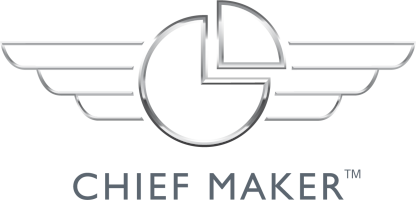
Subscribe to Spotify![]()
Our High Performance teams series now enters the final HP Teams pillar: Execution. So far the pillars we’ve covered are Mission, People, Culture and Tools, and so now we delve into where it can all go pear-shaped and the wheels can come off.
So, in this episode we cover part 1 of this pillar, Operating Rhythm:
- How to find the drumbeat of your team;
- How it keeps everyone focused and united;
- Why it creates time to do all the right thinking required;
- How an operating rhythm makes everyone highly effective with their time.
What is an organisation or team's operating rhythm?
The best way to describe this seemingly mythical concept is to tell you how I really saw it come to life when I worked within the world of elite sport. There's an incredible drumbeat, this rhythm at the heart of the team's success. You turn up on a Monday morning, and everybody knew exactly what was going to happen. You went into the review room – you'd already done a bit of detailed analysis – and the team shared insights, and they had feedback.
That time was precious to them. It was where they re-centered as a group, reset their bar for the week, mentally prepared themselves, worked out what they were going to practise, and worked out the game plan for the week ahead. Then they went out and they practised and refined and got fitter and stronger. Everything about the whole week was designed to drive them towards the big game day on the weekend.
The team would then have the big game day on a Saturday, and the day off on Sunday, and then they came back on Monday morning and did it again. Of course, there are a few adjustments based on the day that the game is on, but that is generally how it goes.
Now, that's a weekly operating rhythm, but I would run larger cycles as well, say six weeks. These six-week cycles were designed to help them improve certain skillsets, certain physical training patterns. It's what they call periodisation. This particular season we broke up into six weekly patterns as well. Then they have a massive annual review. Business does much the same thing. You'll find that most executive teams or any high performance team will do an annual offsite. They'll also do a quarterly, a monthly, a weekly and a daily review.
The power of Purpose and Effectiveness
The impact of this cadence or itinerary cannot be underestimated. I want you to think very clearly now about your team and its operating rhythm: is it crystal clear? If not, why not?
One of the best ways to think about this is that you're like the conductor of an orchestra; the rhythm or the beat of the music played by the orchestra is your operating rhythm. It allows people and all the instruments to come in at the right time, and to do the right things. It gets you focused as a team and moving in the right direction.
Let's look at this epic quote below and bring in a similar topic we explored a few episodes ago:
“As a leader, you must consistently drive effective communication. Meetings must be deliberate and intentional. Your organisational rhythm should value purpose over habit, and effectiveness over efficiency. Just to pick up on these two points said, purpose over habit. If you are looking at your operating rhythm and it is just the rigmarole of every single week and you're going through the motions, it's time to change it up. Your operating rhythm, the purpose of it is to drive growth, focus, unity as a group. If it's not doing that, then you need to change it up. Purpose over habit. Habit, if it's a bad habit, is not one you want.” – Chris Fussell, President of McChrystal Group
So, if you are able to habitualise high performance, this will enable you to automate the pursuit of excellence through your operating rhythm.
The other half of what he said there was effectiveness over efficiency; you don't want meetings for the sake of meetings, but you do want the meetings that you go to, to be highly effective. That means that every meeting has a purpose. It has the right people in the right seats. It has all the data presented in a way that makes sense in advance. It has a very clear agenda with people that have got roles in the meeting.
Defining your operating rhythm
The key now for you as a leader is to make sure that you've got the right mix of meetings in order for your operating rhythm to really hum. Here are the key meetings for you to have:
1. An annual off-site
This is when you come together with your team every single year and you develop and refine your why or purpose, your vision, your values, your strategy, the tactical projects and goals that you're going to hit for the year ahead. This is a two day offsite. I highly recommend having a facilitator to make sure that you really get it right. You can add team-building and any other professional development to the mix. Get away from your main area of work and into the countryside or the beach. Get away from it all.
I've just finished a two day offsite with a team in regional Victoria and you could just see in their eyes the fact that we're in the mountains and it was misty and it was cold, the air was fresh. You could see they were having new insights. You could see it was a relief to them to have some clean thinking time. This is so important. Never underestimate the power of taking your team away from it all, away from the office for two days a year. If you can't afford two days a year to invest in time together as a team, then in my mind you're not thinking like a chief. This is high priority, one of the highest priority things you would do over a year. Make it happen, get it in the calendar and get away.
2. Quarterly meetings
If your annual meeting is a two day offsite, your quarterly meetings will be a half day to one day. What I normally recommend is just to make your first quarterly meeting the same as your annual offsite. Then the next one might be half a day, and then at the half-year mark, it's a one-day event. Then at the three-quarter mark, it's another half day. Just make it fit for you. Your quarterly is all about making sure you're on track strategically. It's a reconnection to the vision, the purpose and the strategy refinements, dealing with any major issues, making some big decisions if you need to.
3. Monthly meetings
This is where we report on all the little initiatives and tactical projects that you're running to execute the strategy. In other words, we shift from strategy down to tactics. This is the execution of the strategy and the steps you're going to take along the way. You get together once a month and the project managers come in and report on time, budget and resources, actions, issues, risks for each and every single initiative that you're running to improve the quality of your team's performance.
4. Weekly meetings
This is all about operational standards, operational improvements, and any key issues of risks in key projects. This is about bringing your team together to solve things quickly so those projects don't stall for up to a month.
5. Daily meetings
This is very operational; you may or may not even need this. But this would be a daily standup – 5 to 10 minutes long, exception reporting only. So you're not reporting everything that's happening in your team, just the things that people need to know about.
That's an example of an operating rhythm. If you would like a copy of all the agendas of those, I'm willing to give them to you. Just email me at greg@chiefmaker.com, and I'll send you a full pdf of all the agendas, so you can have your annual rhythm sorted.
But I don't have time for it!
Recently, I was working with a team and they were so, so busy. They'd had so many projects and operational requirements on them that it was impossible to stay in front of the game. But they needed to make some big strategic moves and run some large tactical projects that would change the game. The problem was, the business was so broken, they didn't have time to do these projects. Catch 22 right? Who hasn't been there?
What was really interesting, was up until that point, they thought that there was no time in the calendar for strategic planning as individuals or as a team. People were left to their own devices. I get that. But in those environments, when people are left to their own devices, they don't do the strategic work, they go to the non-important urgent stuff that won't change the system.
So, what we worked with the leader on was to create a two-hour closed-door weekly workshop with all the leaders in the team. All they did during that time was work on the tactical projects that will deliver the strategy. It was just some quiet time to work together as a leadership team, put everybody in the room and just work on it. The other leaders were there if you needed to have a conversation.
Now, because the executives initiated that meeting and put it in everyone's diary for all the leaders to be there for two hours every Wednesday from 2:00 to 4:00 PM, guess what started to happen? Well, the first week everybody turned up and didn't really know what to do. But they drove a good discussion, they made commitments to some actions.
When they turned up a week later, a whole bunch of work had been done. And a week after that, the same thing. Now the drumbeat was going. The leader used the operating rhythm philosophy to drive attention to a particular challenge in the business and nailed it. He got momentum in the tactical projects in the business, simply by using operating rhythm.
Okay, chief, now, look that sums up operating rhythm. I want you to have a really good hard look at your operating rhythm. Write it all out, have a look at what it looks like and see how you can refine the quality of your schedule.
Stay epic,
Greg
Next article in the High Performance Teams series:
MINI-MBA IN LEADING HIGH PERFORMANCE TEAMS
Limited spaces per intake







